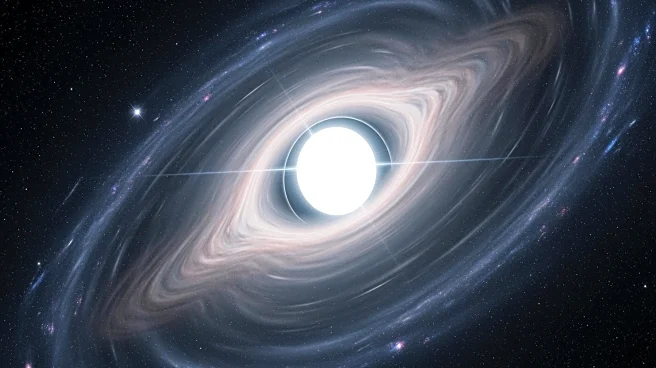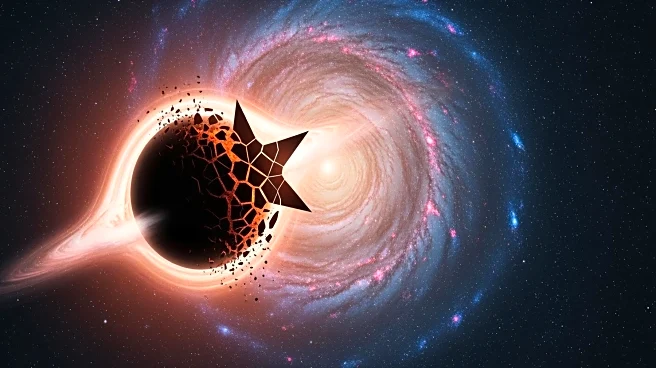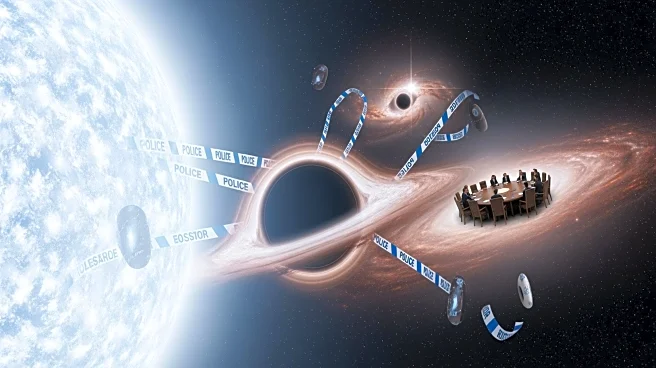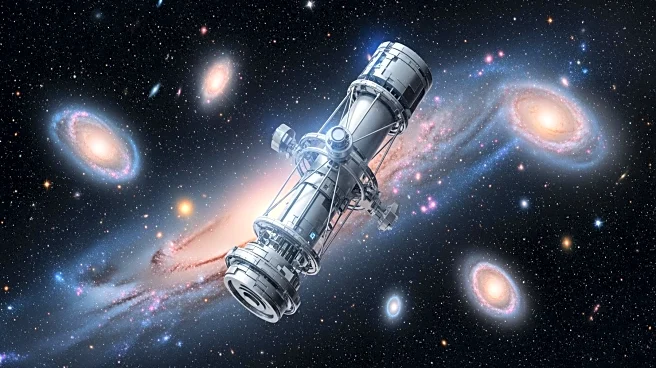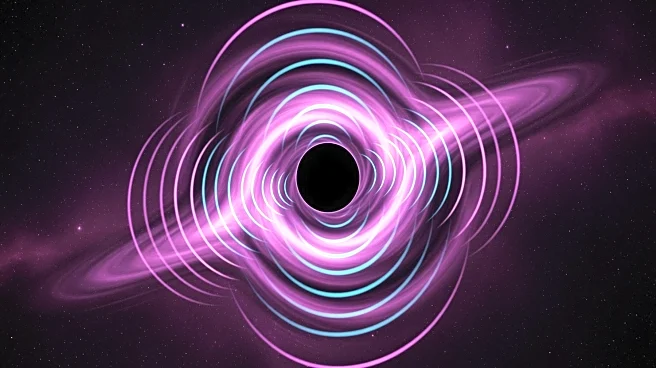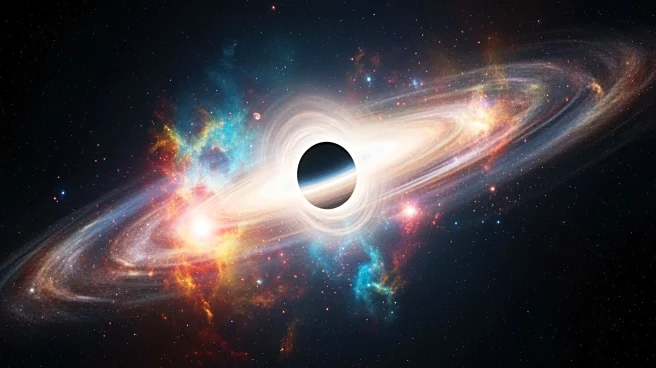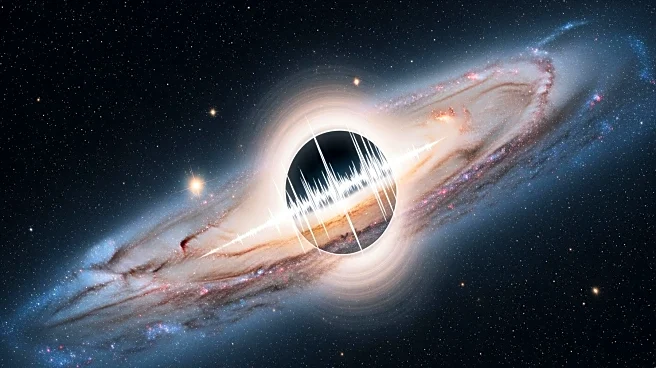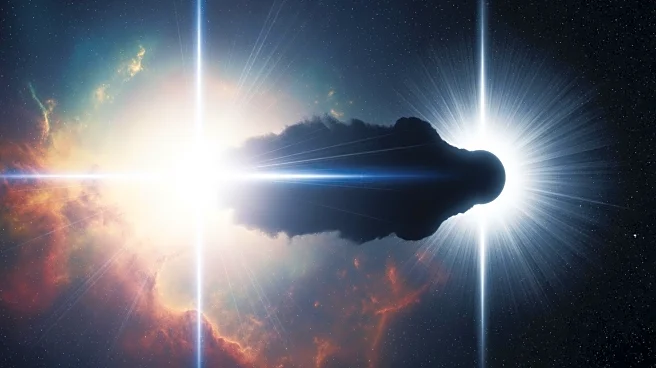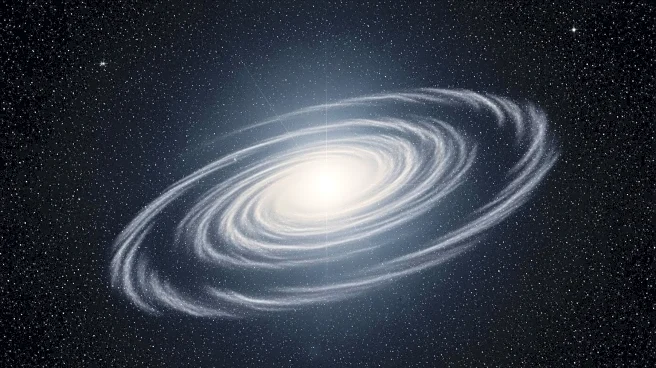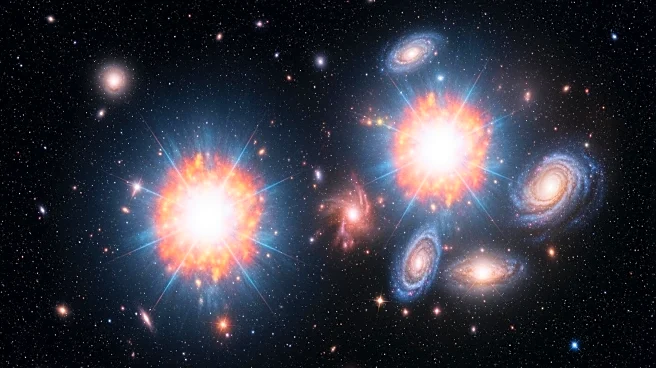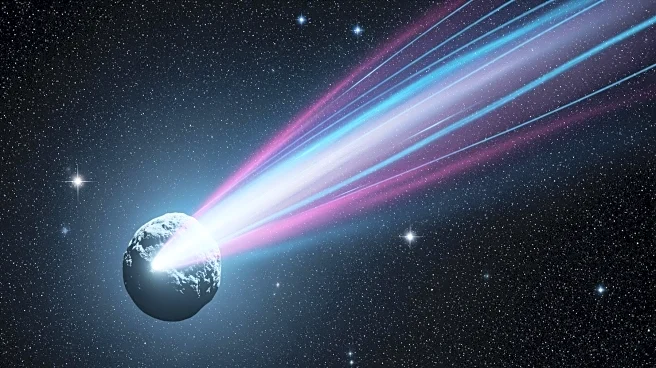What's Happening?
An international team of astronomers has detected the first bright radio emission from a tidal disruption event (TDE) occurring outside the center of a galaxy. This discovery was made using the U.S. National
Science Foundation National Radio Astronomy Observatory's Very Large Array and the Atacama Large Millimeter/submillimeter Array. The event, designated AT 2024tvd, is notable for being the fastest-evolving radio signal of a cosmic event observed to date. The research, led by Itai Sfaradi and Raffaella Margutti from the University of California, Berkeley, highlights a significant breakthrough in understanding the presence of massive black holes in unexpected locations across the universe.
Why It's Important?
This discovery is crucial as it challenges the conventional understanding that tidal disruption events typically occur at the centers of galaxies where supermassive black holes reside. The event AT 2024tvd was found approximately 2,600 light-years away from its host galaxy's center, suggesting that massive black holes may be more widespread than previously thought. This could have significant implications for the study of galaxy formation and evolution, as well as the behavior of black holes. The rapid evolution of the radio signals provides new insights into the dynamics of material interactions near black holes, potentially leading to advancements in astrophysics and cosmology.
What's Next?
The team plans to conduct higher-resolution radio imaging to further investigate these nuclear events. Understanding the connection between the two distinct radio flares observed and the mechanisms behind the delayed outflows of material will be a focus of future research. This could lead to more discoveries of similar events, enhancing the understanding of black hole behavior and their impact on surrounding environments. Continued monitoring and modeling will be essential to unravel the complexities of these cosmic phenomena.
Beyond the Headlines
The discovery raises questions about the distribution and frequency of massive black holes in the universe. It also highlights the potential for new methodologies in detecting and studying such events, which could revolutionize the field of astronomy. The ethical and philosophical implications of understanding the universe's most extreme environments may also inspire broader discussions about humanity's place in the cosmos.
